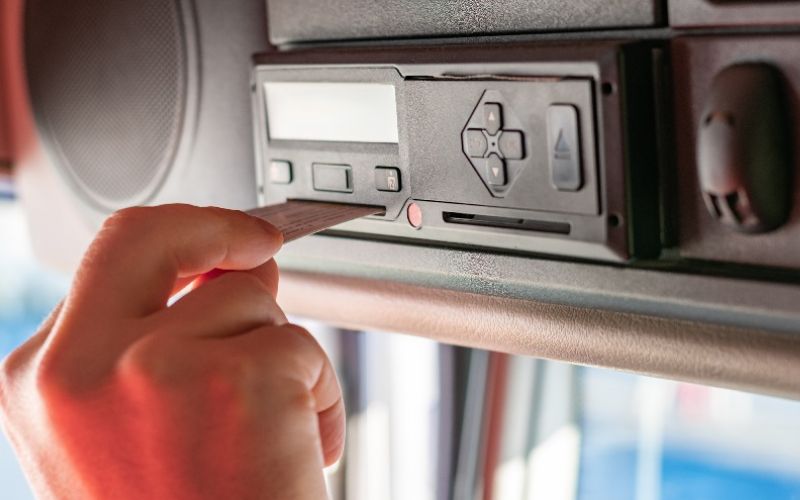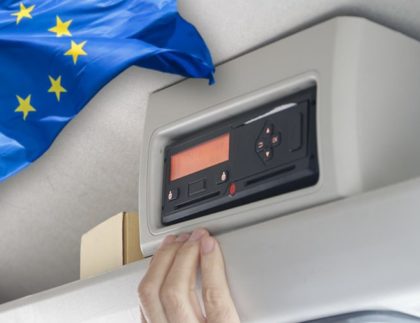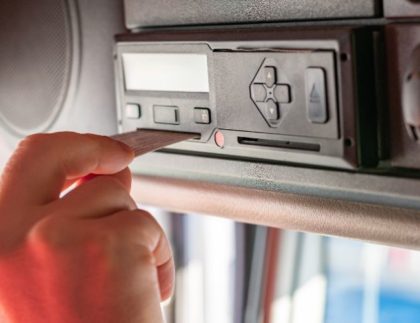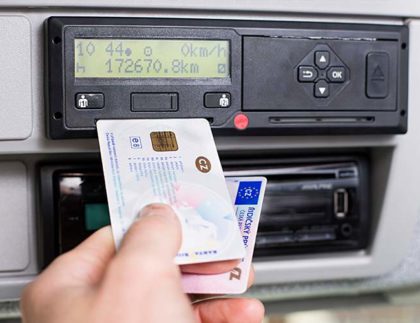

In just a few months the new regulations will be implemented, which will affect the shape of European transportation. In 2023, the obligation to install so called smart tachographs of the second generation in the driver’s cabins of trucks will enter into force.
New digital tachographs will have a number of features to make them more usable for the control services, and which will be even more accurate in monitoring drivers’ workload. Below, you can find a schedule according to which the new tachographs will be implemented for particular types of vehicles, a discussion of the coming changes, as well as the cost related to exchanging the device. You’ll learn all the necessary information, to avoid unpleasant surprises and to prepare your company for the coming legal change.
When in 2023 will the new tachographs come?
The implementation of new tachographs has been divided into a number of stages, and the last of the approved changes shall enter into force in over three years. When will the regulations foreseen for 2023 come into force? It will happen on 21 August – the second generation tachographs will be mandatory in trucks with a maximum permissible weight of more than 3.5 tons registered after that date.
According to the latest news, due to the expected lack of availability of one of the features of the new tachographs, so called safety signal, the EC recommended a temporary workaround, which is the implementation of “transitional tachographs” – devices with all the features of the second generation, except for the aforementioned signal. They will require no replacement but rather a system update by an authorized service provider. Companies owning transitional tachographs will have time to do this until 31 March 2026.
New tachographs implementation schedule
When will the new tachographs be mandatory in the European Union? The implementation of the regulations concerning the installation of devices was divided into several stages. The current schedule can be found below:
- 21 August 2023 – mandatory installation of tachographs in the new vehicles and older ones that service international transport, so called retrofit,
- 31 December 2024 – the end of the first stage of the exchange. From 1 January 2025 all analogue tachographs and digital tachographs manufactured before June 2019 and installed in the vehicles used for international transport will have to be exchanged for new smart tachographs of the first or second version,
- 19 August 2024 – the end of the second stage of the exchange. From that moment, trucks used in the international transport will have to come with new tachographs of the second version,
- 1 July 2026 – the final stage of the discussed changes. From that day on, the requirement of the new tachographs in minibus transportation – that is vehicles of GVW between 2.5 to 3.5 tons, will come into force. The regulations regard international transport of goods.
What will change in the tachographs themselves?
The successive implementations of the new tachographs is connected with the coming into force of the provisions of the mobility package. The new devices are supposed to make the work of drivers easier and to increase the effectiveness of the European control authorities – including when it comes to the working/resting times of drivers verification and to preventing potential tampering. What are the key aspects of changes in the new tachographs?
One of the most significant new features will be automatic border crossing recording within the EU with the GNSS. The position of the vehicle will be recorded in the tachograph’s memory and it will be available for the control authorities to read. Additionally, the memory capacity will be increased, which will allow for the control of the longer work time periods of drivers. The new driver cards with higher capacity will also be implemented. A very convenient feature of the new tachographs will be automatic border crossing recording.
With DSRC antennas, new tachographs will increase the remote control potential, that will include the maximum driving time control. The devices will come with the function of loading and unloading recording (along with the position) and they will be equipped with the ITS interface, which will communicate with external transportation systems via Bluetooth. In case of any future regulatory changes, there will be the option of tachograph software updates.
Who will have to exchange their tachographs?
The exchange will be mandatory to the large number of European transportation companies, however it will not affect the entire industry. As you can see from the schedule above, at first the regulations will apply to international truck transport exclusively. Only in 2026, the same regulations will begin to apply to hauling with the vehicles of a maximum permissible weight of 3.5 tons, however – what’s worth pointing out – exclusively in international transport.
What are smart tachographs?
Smart tachographs are technologically advanced versions of digital tachographs. They come with the latest GNSS positioning systems, which can be read remotely by the control authorities – without the need of pulling the vehicle over. Thanks to the satellite systems, the new tachographs will automatically gather data regarding the vehicle position, which allows the control authorities to detect violations more effectively.
Regulations regarding the new tachographs
The new tachographs will be implemented in the entire European Union. Their exact specification is set forth in the Appendix 1C to the Regulation (EU) 165/2014 of the European Parliament and of the Council on tachographs in road transport.
The price of the new tachographs
As of today it is rather difficult to set the price of the new tachographs, as these devices are not yet available on the market. It will for sure depend on the particular manufacturer and the shop where the exchange will take place. The costs related to tachograph validation are also likely to rise.








